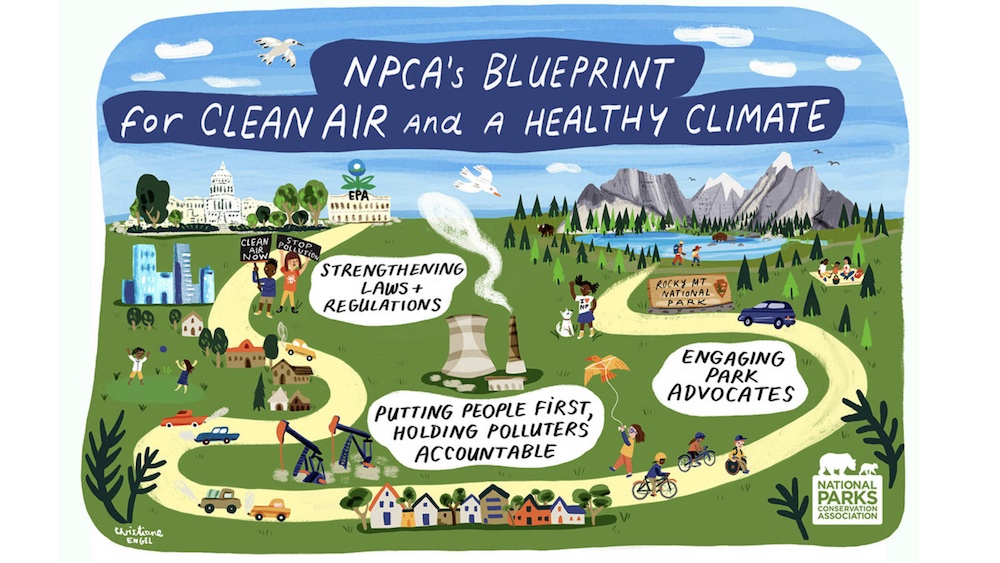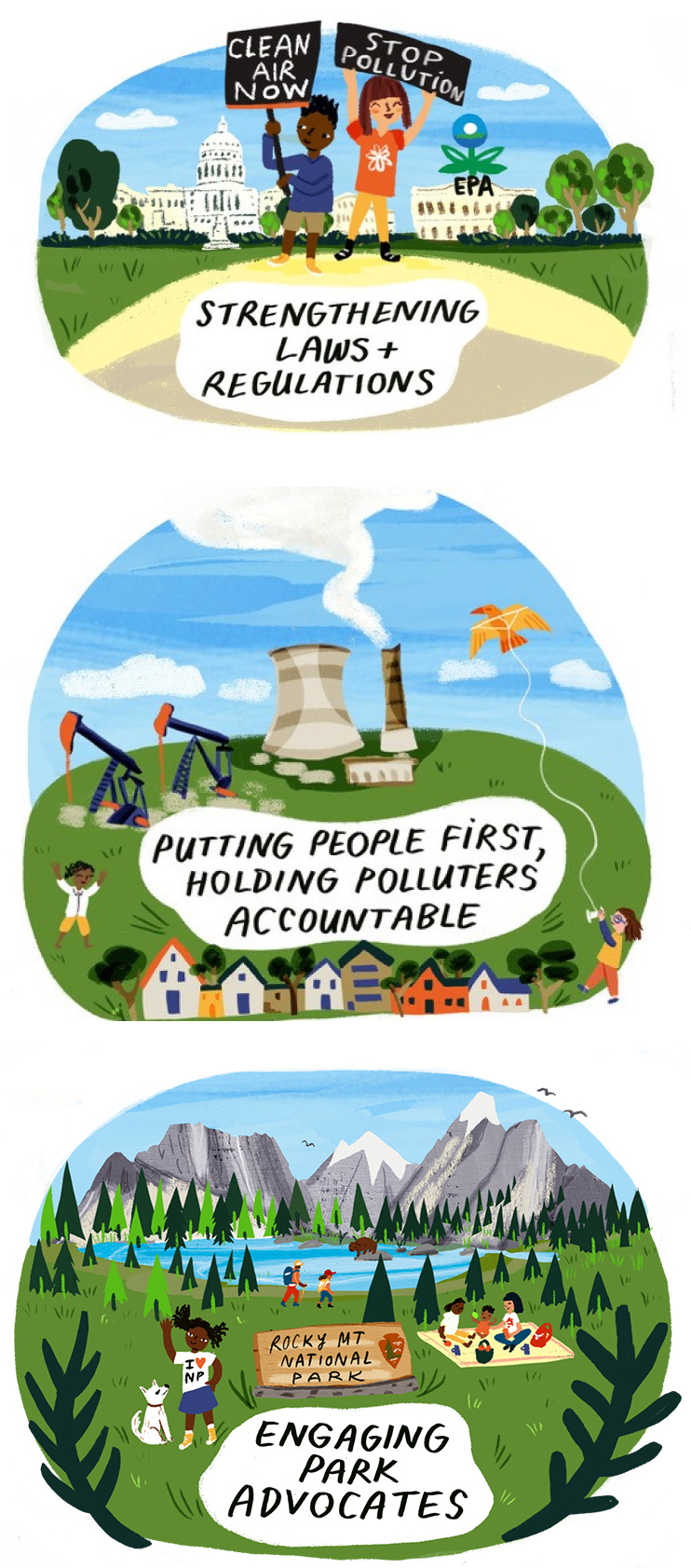Air & Climate Report
Polluted Parks
Polluted Parks: How Air Pollution and Climate Change Continue to Harm America’s National Parks
National parks are home to some of America’s most iconic landscapes and best-preserved cultural and historic sites, and these places need clean air and a healthy climate to flourish. Yet air pollution and climate change remain some of the most serious threats to the health of our parks today — and the problems they cause include weakening the health of plants and animals, permanently harming ecosystems and negatively affecting visitors’ health and enjoyment. NPCA advocates for swift action to curb air pollution and limit climate threats affecting people and parks. This report offers an update from our 2019 Polluted Parks report with new data that shows modest improvements. Most importantly, the report demonstrates that we must act now to ensure parks thrive for generations to come.
With stunning mountains, caverns, forests, foothills and 2,000 plus-year-old sequoias towering overhead, the Land of Giants might seem invincible. In truth, these majestic parks, and the plants and wildlife which rely on them, face the unique and devastating consequences from human-caused air pollution and climate change.
Despite its reputation as one of the most beautiful autumn destinations for its foliage and dramatic views, polluting industrial facilities across Kentucky and the surrounding regions from the Southeast to the Ohio River Valley, continue to threaten Mammoth Cave’s biodiversity, vistas and visitors’ health.
The park, known for its rare ecosystems and towering sand dunes, is not immune to the challenges from industrial activity and transportation in areas near and far.
Despite its unparalleled tropical beauty in the U.S., this majestic expanse of a park faces alarming challenges from climate change and air pollution originating from industrial sources and emissions capable of traveling hundreds of miles. Species unique to the park, such as the endangered Florida panther, are at risk, highlighting the pressing need for measures to address and curb pollution near this vital habitat.
Guadalupe Mountains National Park’s awe-inspiring mountaintop views and spectacular night skies have been diminished over time due to haze pollution from faraway coal plants and nearby oil and gas operations.



Make a tax-deductible gift today to provide a brighter future for our national parks and the millions of Americans who enjoy them.
Donate Now